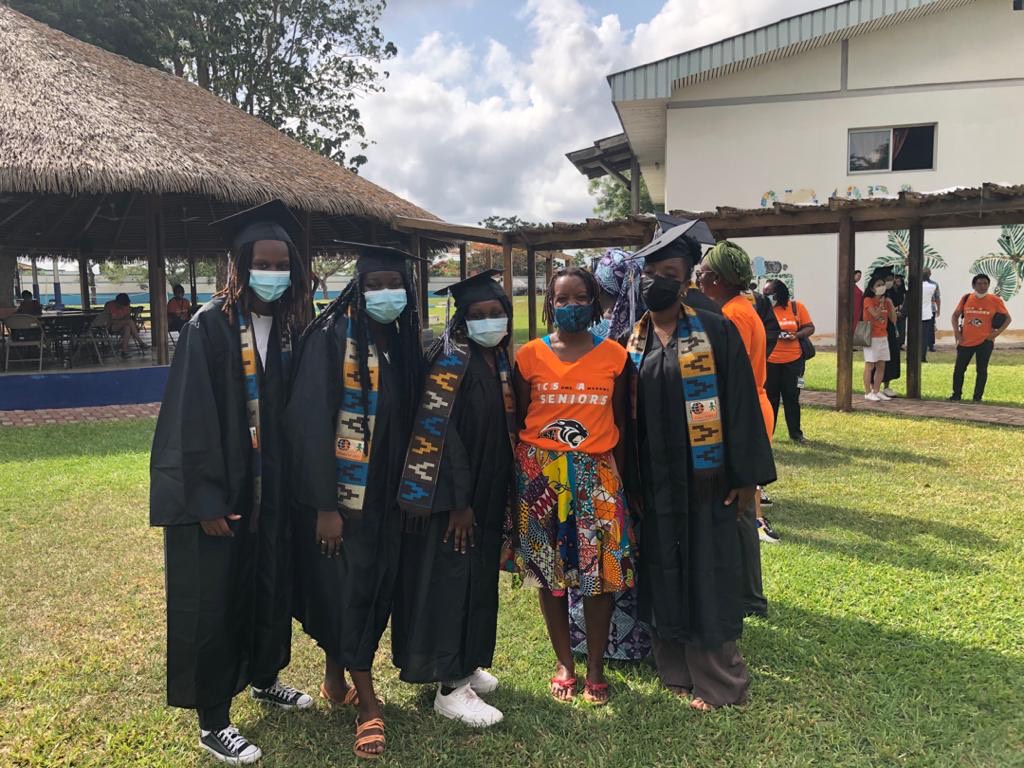Cheryl-Ann Weekes is the high school counselor at the International Community School of Abidjan in Côte d’Ivoire. This is her 10th year working in international schools and her 22nd year as a school counselor. She uses quotes from her favorite author Maya Angelou and Oprah Winfrey to teach students about positive self-talk.
Most international schools have a child protection policy and an annual staff training on how to report cases, the different types of abuse, and the expectations for how we interact with students. However prior to 2014 when I chose to conduct lessons for my grades 11 and 12 students, these types of lessons for students were not mandated at any of the schools where I worked.
I chose to take on this task because I believe that it is important that students fully understand the definition and parameters of consent. I want them to consider what it means to give and ask for consent and ultimately change the way they behave and interact so that they can respect the boundaries set by others.

Approaching this topic
I start these lessons by giving them the definition of consent and then we discuss the following statements:
- Consent must be asked for and given
- The response must be verbal
- It is a one-time agreement
- The absence of a no or silence is not a yes
- Consent can be taken away
- “No” is not an invitation to persuade anyone to “Yes”
For many students, it is the first time they have heard consent described in this way. I introduce the definition of coercion and how it is the opposite of consent, as evidence of the last statement. We discuss why it is not okay to try to change someone’s mind once they have said “no” and why if there is no answer or silence to a question they should take that as “no”.
Student response
Their initial response is that it is awkward to ask for consent to do simple things like hug or touch or kiss someone because there are non verbal ways to give permission. When I ask how do you know a person doesn’t mind being touched on their knee or back or hugged? The most popular response is they don’t move away or they will lean into it. I challenge them by reminding them that non verbal cues can be misread and misunderstood and to be certain that consent has been given, a verbal response is the best way. To their comments that asking for consent is awkward, I tell them that this weirdness will lessen as it becomes a regular practice.
We discuss why asking, “Do you like to be hugged?” or “Is it okay if I hug you?” doesn’t have to be awkward because it allows the other person to feel respected. When I ask if they would speak up if someone stands too close to them or leans into them. They often say no, that they would just move away instead so as not to cause a scene.
My goal at this point in the lesson is to help them understand that they should feel comfortable saying, “No, I don’t want to”, “Don’t do that” or “Stop” at any time. We discuss the importance of speaking up when their boundaries have been breached even if it feels uncomfortable.

When we move on to the part of consent that says it can be taken away at any point, initially students are surprised and confused. Society has trained many of us that if we start something we must go through with it. They have not been told very often that they have the right to change their minds and remove consent if they don’t want to continue with an activity. It is essential that both girls and boys understand that the taking away of consent can happen and should be respected. It is also important that they understand the difference between flirting and sexual harassment so that they don’t unknowingly commit an offense.
When it clicks
It is great when you see students have “aha” moments where they have learned something new and plan to apply it. I enjoy the questions that come up as we engage in these discussions: like how do they protect themselves from false accusations. Here I stress the importance of having conversations with each other to agree on what will take place. I answer all their questions honestly and we discuss different scenarios because I want them to know the appropriate way to respond when they are in these situations.
Often, parents get nervous when they hear that I am speaking with their children about consent. They are wary of me talking to them about sex and sexting because of their beliefs around these issues. I explain that I choose to talk about consent as it relates to personal boundaries not sexual conduct because I hope students will continue to come to new understandings and will continue to reexamine the way they interact with each other—the way they flirt and give compliments and ultimately the way they respect the boundaries of others.
If we give young people the tools and the knowledge to reconsider what they already know, then changed behavior will follow. A new awareness of what consent means can help to decrease the instances of sexual harassment in school and in their friend groups. I encourage all counselors to start having conversations about consent with their students because it is never too early to help them understand the need for boundaries.
Resources to help guide these conversations:
Visit our Professional Learning Hub to connect and explore opportunities for professional growth, both as an individual and as a school.



